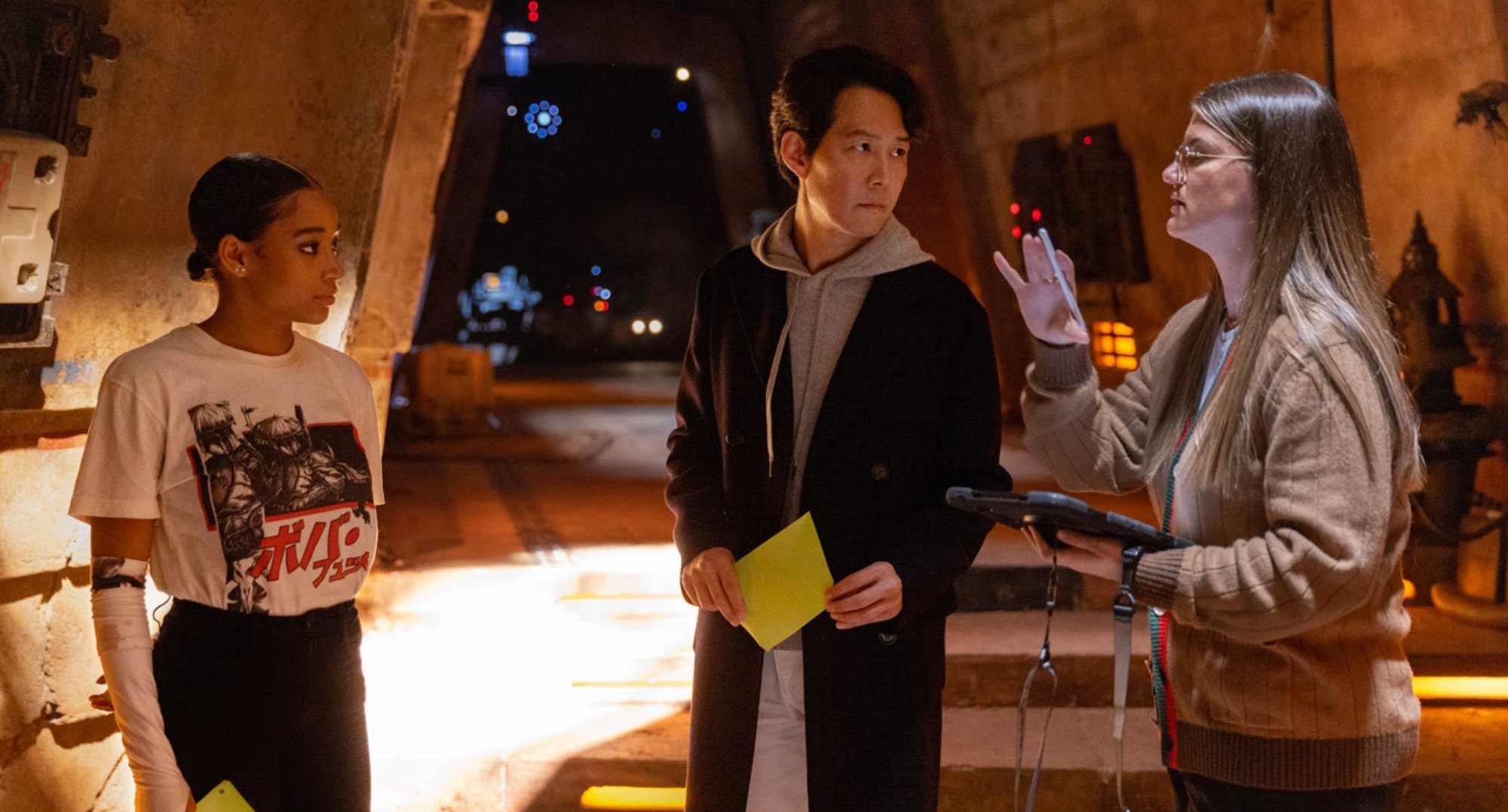Story Synopsis and Character Exploration

The acolyte time – Acolyte Time by Leila S. Chudori is a captivating novel that delves into the complex world of Indonesian politics and society during the tumultuous 1960s. The story unfolds against the backdrop of the country’s struggle for independence and the rise of communism.
The acolyte time is a period of intense spiritual training and devotion. During this time, acolytes may take on various vows, such as the barash vow , which involves abstaining from certain foods and drinks. The acolyte time is a transformative experience that can help individuals deepen their connection to their faith and prepare them for a life of service.
Central Plot and Major Events
The novel centers around the lives of three main characters: Sena, a young woman from a wealthy family; Biru, a Javanese peasant; and Ippe, a communist activist. Their paths intertwine as they navigate the political turmoil and personal challenges of the era.
The story begins with the outbreak of the Indonesian National Revolution in 1945. Sena, a young and idealistic woman, joins the struggle for independence, while Biru is conscripted into the Dutch colonial army. As the war progresses, Sena and Biru find themselves on opposing sides, their friendship torn apart by the conflict.
The Acolyte, an upcoming Star Wars series set a century before the events of the prequel trilogy, promises to explore the dark side of the Force and the rise of the Sith. With a cast that includes Amandla Stenberg as the titular acolyte and Lee Jung-jae as a mysterious Sith Lord, The Acolyte is sure to be a must-watch for fans of the Star Wars universe.
For more information on the cast of The Acolyte, including their characters and backgrounds, check out this comprehensive guide: cast of the acolyte osha. The Acolyte is set to premiere on Disney+ in 2023.
After independence is achieved, Indonesia faces new challenges, including the rise of communism. Ippe, a dedicated communist, becomes a prominent figure in the Indonesian Communist Party (PKI). As tensions between the government and the PKI escalate, Sena and Biru find themselves caught in the crossfire of a political struggle that will forever alter their lives.
Main Characters
Sena: A strong-willed and independent woman, Sena is a symbol of the aspirations of Indonesia’s post-independence generation. She is torn between her desire for a better future for her country and her personal relationships.
Biru: A Javanese peasant, Biru is a simple and hardworking man who is caught up in the political turmoil of the era. He is torn between his loyalty to his family and his duty to his country.
The Acolyte time is a mysterious and magical time. It is a time when the veil between the worlds is thin, and the supernatural can enter our own. Many strange and wonderful things can happen during the Acolyte time, but one of the most anticipated is the arrival of the Acolyte.
The Acolyte is a powerful being who comes to help those who are in need. They can heal the sick, grant wishes, and even perform miracles. But what time does the Acolyte come out? The answer to that question is not entirely clear.
Some say that the Acolyte comes out at midnight, while others say that they come out at dawn. No matter what time they come out, the Acolyte is always a welcome sight. They bring hope and healing to those who are in need, and they remind us that even in the darkest of times, there is always hope.
Ippe: A dedicated communist, Ippe is a charismatic and influential figure who believes in the power of revolution. He is a close friend of Sena and Biru, but their relationship is strained by their political differences.
The Acolyte, a new Star Wars series set in the High Republic era, is set to premiere on Disney+ in 2023. The series will follow the journey of a young acolyte who discovers a dark secret that could threaten the entire galaxy.
Fans of the Star Wars universe can watch the acolyte online free when it premieres. The Acolyte is sure to be a thrilling and suspenseful addition to the Star Wars saga.
Significance of “Acolyte Time”
The novel’s title, “Acolyte Time,” refers to a period of waiting and preparation. It is a time when the acolytes, or followers, of a particular cause or movement are preparing themselves for a greater purpose. In the context of the novel, this “greater purpose” is the struggle for independence and the creation of a just and equitable society.
The Acolyte, a highly anticipated Star Wars series, is set to explore the dark side of the Force in the High Republic era. While fans eagerly await its release, a recent review on the acolyte rotten suggests that the series may not live up to expectations.
However, it is important to note that the Acolyte is still in its early stages of production, and it is too soon to judge its ultimate quality. Fans should remain cautiously optimistic as they await further news about this intriguing addition to the Star Wars universe.
The novel explores the sacrifices and challenges that the acolytes of the Indonesian revolution faced. It is a story of hope, betrayal, and the enduring power of the human spirit.
Thematic Analysis

Leila S. Chudori’s Acolyte Time delves into a profound exploration of multifaceted themes, intricately woven together to illuminate the human experience. Central to the narrative is the theme of faith, examined through the lens of religious belief and personal conviction.
Throughout the novel, Chudori deftly portrays the transformative power of faith, its ability to sustain individuals amidst adversity and inspire them towards acts of courage and sacrifice. The protagonist, Maya, embodies this unwavering faith, drawing strength from her spiritual beliefs as she navigates the tumultuous political landscape of Indonesia.
Power and Sacrifice
Intersecting with the theme of faith is the exploration of power and sacrifice. Chudori delves into the complex dynamics of power, its corrupting influence, and the sacrifices individuals make in pursuit of it. The novel exposes the insidious nature of political power, its ability to manipulate and control, often at the expense of the marginalized and voiceless.
In contrast, Chudori also portrays the transformative power of sacrifice, highlighting the profound impact it can have on both the individual and society as a whole. Through the sacrifices made by Maya and other characters, the novel illuminates the potential for personal growth, redemption, and the triumph of justice over adversity.
“Acolyte Time”
The concept of “acolyte time” serves as a central motif in the novel, intertwining with the themes of faith, power, and sacrifice. “Acolyte time” represents a period of waiting, preparation, and anticipation, a time when individuals are tested and refined before they are ready to fully embrace their destiny.
Throughout the novel, Maya and other characters experience their own “acolyte time,” enduring trials and tribulations that ultimately shape their paths and prepare them for the challenges that lie ahead. The theme of “acolyte time” underscores the notion that personal growth and transformation are often preceded by periods of adversity and sacrifice.
Worldbuilding and Symbolism: The Acolyte Time

The setting of “Acolyte Time” is a meticulously crafted world that serves as a mirror to our own, while also possessing unique elements that set it apart. The story unfolds in a nameless city, a labyrinthine metropolis that embodies the complexities and contradictions of modern urban life. The city is a place of both beauty and decay, where towering skyscrapers cast long shadows over narrow, winding streets. It is a place where wealth and poverty coexist in stark contrast, and where the pursuit of progress often comes at a great cost.
Symbolism and Imagery
Throughout the story, Leila S. Chudori employs a rich tapestry of symbolism and imagery to enhance the narrative and convey deeper meanings. The city itself becomes a symbol of the human condition, with its bustling crowds representing the anonymity and isolation that can be found in modern society. The recurring motif of water—in the form of rain, rivers, and floods—symbolizes both purification and renewal, as well as the destructive power of nature. Chudori also uses animals to represent different aspects of human nature, such as the rats that symbolize the hidden dangers lurking in the city’s shadows.
Acolyte Time, The acolyte time
The concept of “acolyte time” is central to the story’s atmosphere and symbolism. Acolyte time is a liminal period, a time of waiting and preparation, when the old order is fading away and the new has yet to take its place. It is a time of uncertainty and anxiety, but also a time of potential for change and transformation. The story’s characters are all caught in this liminal space, struggling to find their place in a rapidly changing world.